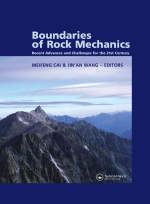Acoustic logging relies on the analysis of seismic waves generated and recorded within a borehole. These waves provide information about the borehole, the surrounding formation, and the casing and cement of a cased hole. Since the early days, when a single source and single receiver were used, acoustic logging has advanced into a sophisticated system with a broad spectrum of applications aimed at obtaining information about the borehole and the surrounding medium. Many advanced technologies developed in recent years have improved our ability to extract additional information from acoustic logging. Among them is acoustic logging-while-drilling, in which real-time data are acquired in vertical, deviated, or horizontal wells while drilling. Another newly developed technology is borehole acoustic reflection imaging, which has the capability to delineate geological structures as far as 10–20 m away from the borehole. Other developments include high-tech sonic/ultrasonic methods, which can be employed to evaluate the condition of the cement bond in cased holes. In short, acoustic logging has grown into an extensive field with advanced applications. However, the most recent books concerning acoustic well logging were published more than 16 years ago (Paillet and Cheng 1991; Tang and Cheng 2004) and do not cover all of these newly developed technologies. To mitigate this gap in books, this book provides an in-depth review of acoustic logging using extensive numerical modeling examples of waves in and around a borehole to help visualize and understand the waveforms resulting from complicated boreholes and measurement geometries <...>













